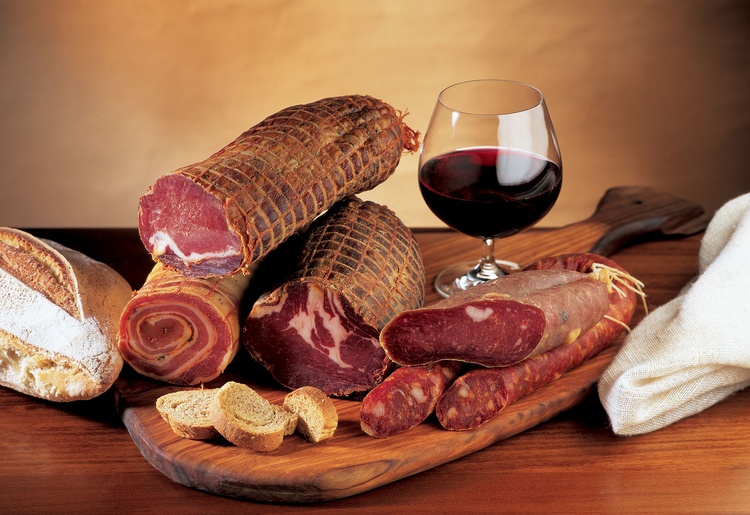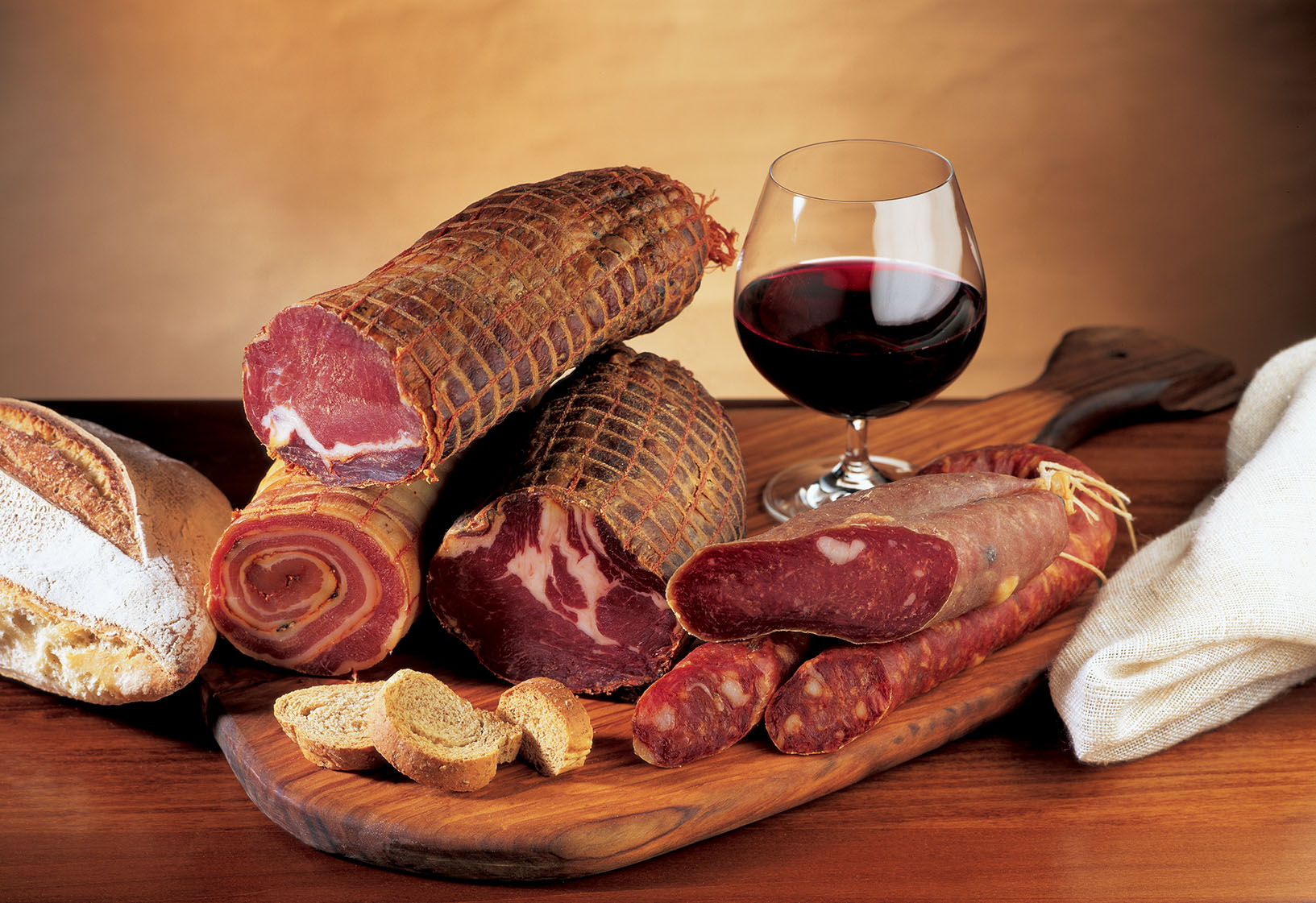The French school of thought - the most traditional and widespread - is based on a rigid set of rules and guidelines.
The Italian school follows the French and takes a more scientific approach to exploring the olfactory and gustatory components of food and wine.
The English school - which is also applicable in Australia - is more influenced by personal taste, and doesn’t adhere to too many rules.
The most important thing to remember is that cold cuts are best enjoyed with some fresh bread and a glass of quality wine.
Once upon a time, the mixed antipasto was perennially present on the menu of every Italian restaurant in Australia. Today, that iconic platter with salami and prosciutto, olives and pickles, and perhaps a caprese salad, a bruschetta or a few slices of cheese, has been superseded by the king of antipasti: cold cuts.
Italian cold cuts available on the Australian market are top of the range, especially certified DOP (Protected Designation of Origin) products, and those brought over by an ever-growing lineup of importers who seek out the best of the best for supermarkets and delicatessens, catering to an increasingly demanding population.
Over the past two decades, the cold cuts produced in Australia have come a long way in terms of both quality and variety. In the 1980s, there was only one butcher in Melbourne – a Swiss butcher with a store in Ormond – who produced bresaola (air-dried, salted beef that has been aged for one to three months). Nowadays, this specialty often features on restaurant menus, served with oil, parmesan shavings and rocket.
Today, Australian producers bring cold cuts of the highest quality to our tables, thanks to the scrupulous monitoring of the meat supply chain.
These delicious specialties can be found in select restaurants and in the homes of many Italians, and are also celebrated with events such as the Melbourne Salami Festa, where passionate salami makers come together to share their goods, made from pork, beef, duck, goose, venison, goat, elk and even wallaby.
Artisanal cold cuts can vary in terms of flavour, texture and aroma depending on the origins of the producer, but one thing remains certain for all varieties: it would be a crime to enjoy them without a glass of wine.
But which wine should you choose?
Cold cuts present a world of flavours, from the sweetness of prosciutto to the intensity of salama da sugo ferrarese, and the spicy notes of soppressata or ’nduja calabrese. For all of their differences, there are two fundamental flavours which unite all of the products within this group: the saltiness and sweetness of the fatty component.
According to the guidelines, a cold cut which is more sweet than salty is best paired with a soft, moderately tannic young wine with low acidity. In Italy, these cuts would go perfectly with a Bonarda dell’Oltrepò Pavese or a Morellino di Scansano, both DOP products. Given that the latter is 85 per cent Sangiovese, you could substitute it with one of the many Sangiovese wines on the Australian market, both imported and produced locally. The top local drops are those from the King Valley in Victoria and South Australia. The important thing is that the wine is a red with a big personality - rustic and bold, yet lively and light.
Aged cuts, which are typically salty, go well with both red and white wine, depending on the specific product. If opting for a white wine, it must be young, not too acidic and, above all, supple and full-bodied, with a bouquet of rich aromas. Recommended are a Collio - a blend of Friuliano, Ribolla Gialla, Malvasia Istriana, Chardonnay, Pinot Bianco, Pinot Grigio - or Trebbiano d’Abruzzo.
Among the local products, you can choose a White Hermitage (or Trebbiano), a variety brought to Australia in 1832 by the father of the nation’s wine industry, James Busby, and first cultivated in the Hunter Valley in New South Wales. If you can’t get your hands on this wine, a Prosciutto di Parma can also be married perfectly with a Marsanne from Nagambi in Victoria, a Semillon from the Hunter Valley, or a Viognier.
If you prefer red wine, you should choose a young, medium-bodied wine with discernible tannins, round notes and an intense bouquet. The polished and supple Refosco is the perfect choice and can be sourced locally, with the best versions of this product found in Heathcote, Victoria.
When it comes to spicy cuts, such as those from Calabria, Umbria and Tuscany, you’ll need to find a bottle-aged red wine with a bouquet of mature fruit and spices, well-balanced tannins and a persistent, aromatic finish. A Roero Rosso or Rosso di Montalcino will make for the perfect pairing.
In Australia, you can opt for a Sangiovese or a top of the range Nebbiolo from the King Valley, Mornington Peninsula or Bendigo in Victoria, the Margaret River in Western Australia, the Clare Valley in South Australia, or Mudgee in New South Wales.
Fatty cold cuts include guanciale (cured pork cheek), lardo (cured pork fat) and pancetta.
Traditionally produced in Tuscany, Umbria and Lazio, guanciale can also be found in Australia, whether it’s imported or produced locally. This particular cut is essential for the making of a delicious carbonara, amatriciana or gricia sauce. This specialty should be enjoyed with a young red wine which is not overly acidic, such as a Lambrusco or Merlot. While soft, velvety Merlots are easy enough to find in Australia, you must be careful to source Lambrusco from a specialised retailer to avoid purchasing a less desirable version. An interesting alternative to Lambrusco could be the old Sparkling Burgundy, known today as Sparkling Shiraz. This bubbly version of Shiraz was born in 1881 thanks to enologists at the Seppelt Great Western in the Grampians, Victoria. Today, the best versions of this wine are sourced from South Australia.
Similar to guanciale, lardo can be enjoyed as a cold cut or as a component of a dish.
If you’re fortunate enough to taste Lard d'Arnad DOP from the Aosta Valley – pieces of fatback cured with herbs, and spiced and aged for three months in wooden tubs – you will need a young medium-bodied wine with little tannin, such as a Pinot Noir.
If instead, you have the chance to savour the unmistakable flavour of Lardo di Colonnata - a cold cut which is left to season inside marble bowls – a Sparkling or Champagne is your best bet.
Pancetta arrotolata is produced with the fatty parts of pork and seasoned with salt, pepper, spices and sugar before being rolled and aged. Its intense aroma and flavour call for a young, full-bodied red. A glass of Barbera d’Asti or Gutturnio dei Colli Piacentini will make for the perfect marriage. While it’s doubtful that Gotturnio has made its way to Australia, myriad quality versions of Barbella can be sourced locally.
Finally, cured cuts such as salami varieties and cooked cuts such as mortadella pair especially well with sparkling young red wines.












